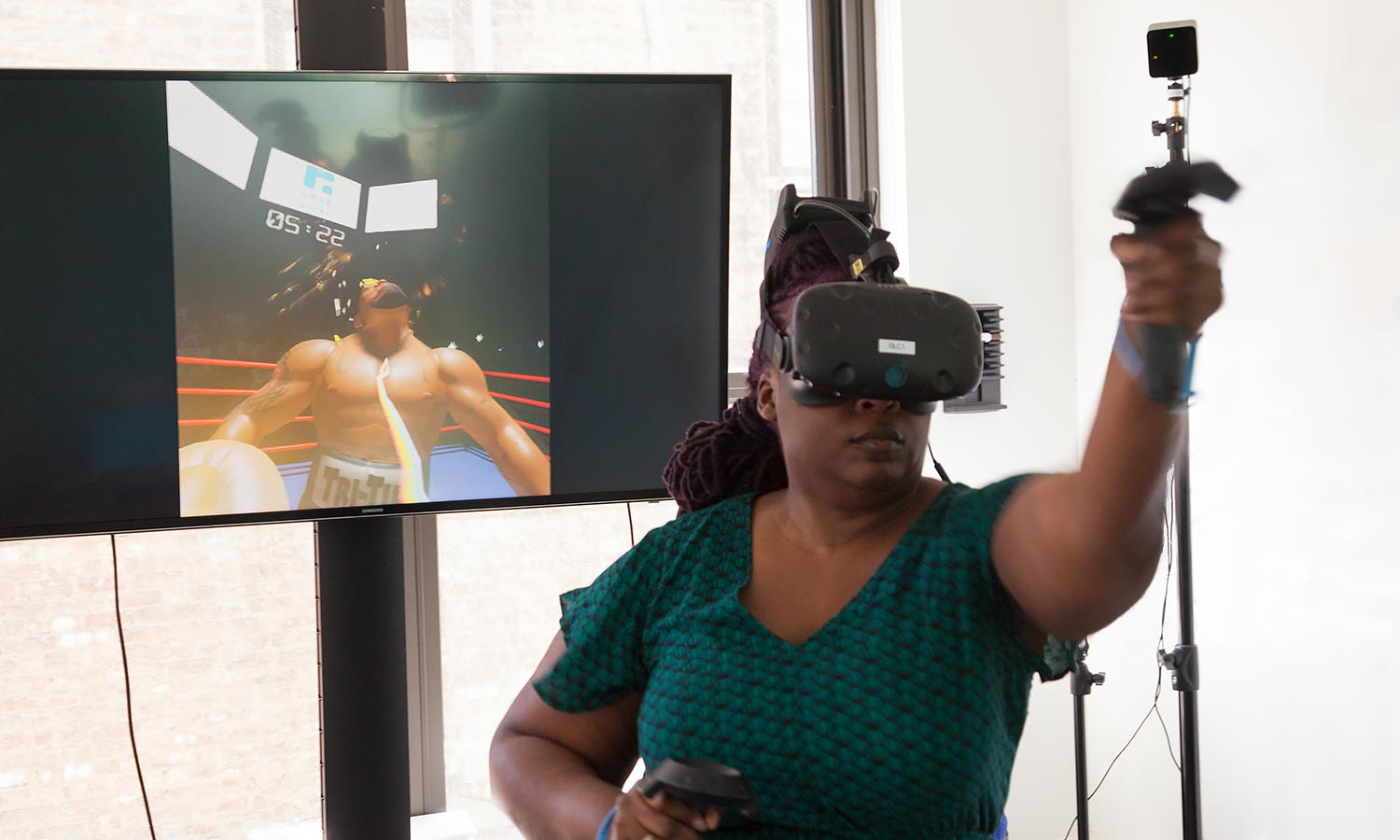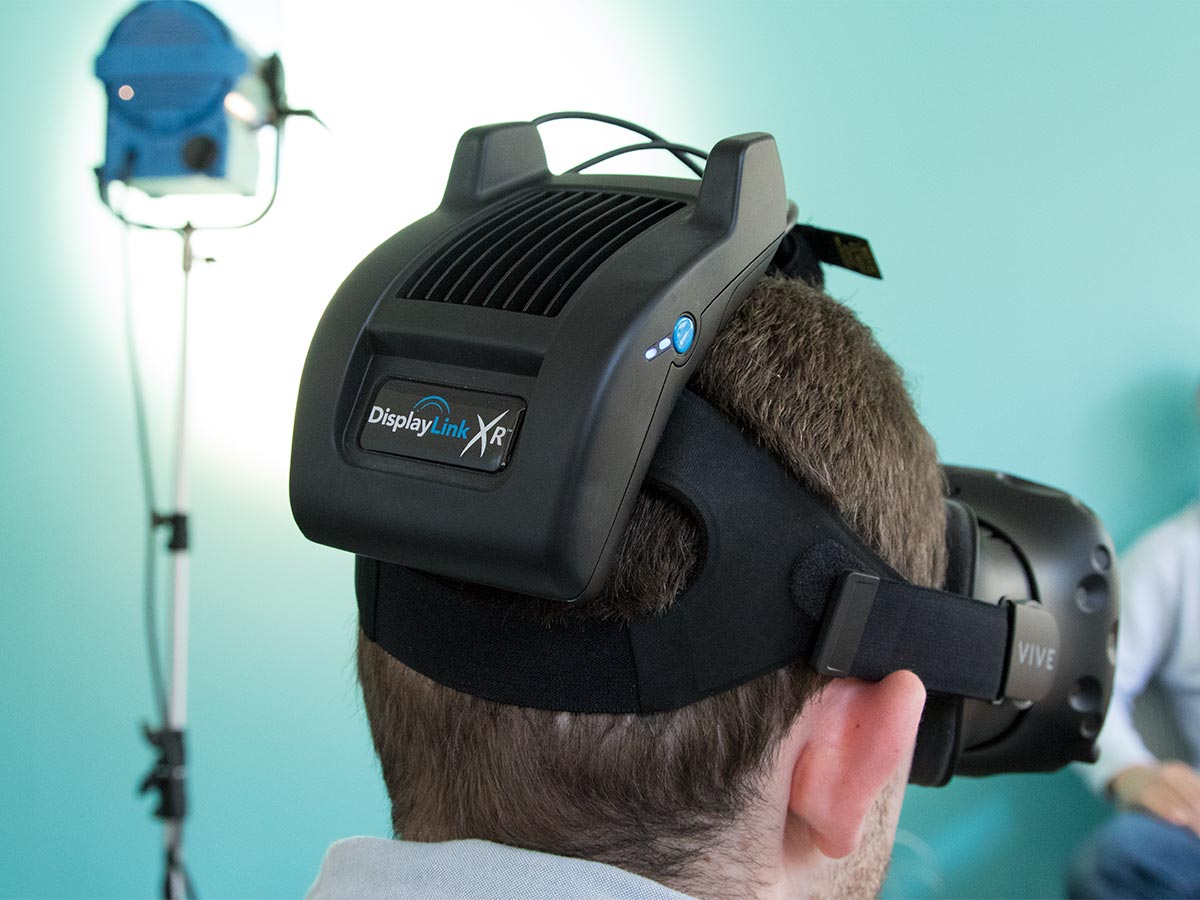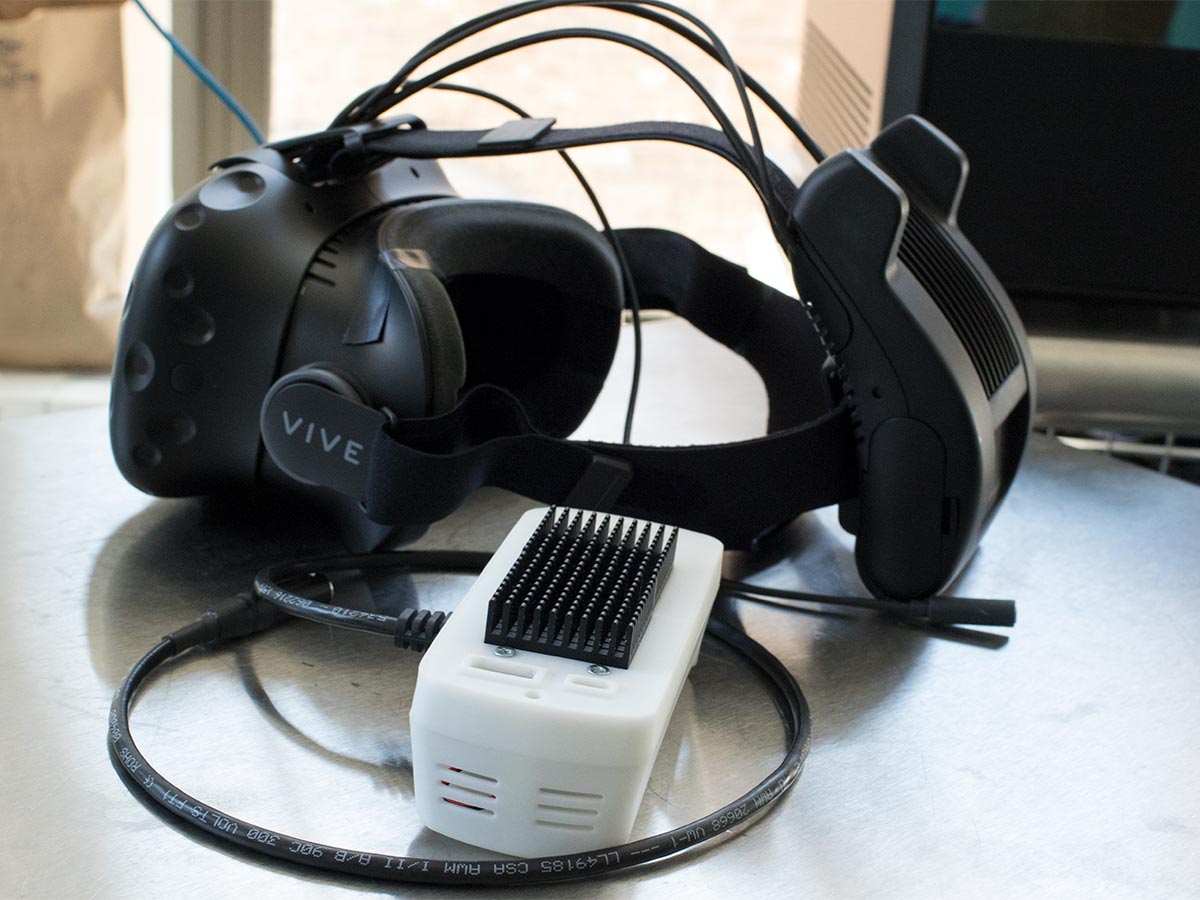Exclusive: Hands-on with DisplayLink's New Wireless VR Kit
The DisplayLink XR cuts the cord for headsets like the HTC Vive and Oculus Rift. We get a first-look at the new, latency-free version of this groundbreaking device.
I've logged a lot of time in virtual reality, particularly with the PC-powered HTC Vive and Oculus Rift. Both systems have their strengths and weakness, but the most annoying part about both devices is the cord. Both headsets offer the semi-freedom of room scale. I say semi, because of the long snaking cables tethering you to a desktop or laptop. But liberation might be coming soon from an unlikely source
DisplayLink recently came to the Tom's Guide offices to give us an exclusive look at a newly-updated, latency-free version of its wireless VR headset, the DisplayLink XR. Attached to a VR headset in the form of a lightweight black box positioned at the back of the Rift or Vive, the XR eliminates those pesky wires for true freedom of movement in VR. The rather exciting technology comes from something you might already have on your desk, a standard DisplayLink-powered laptop dock.
MORE: How an Enterprise Docking Company Became Wireless VR Leader
The company first showed its wireless VR solution at CES and demoed it for the public again at Computex Taipei, but that version of DisplayLink XR used an older chip which had a small amount of latency and image pixilation. The DL-8000-powered my model executives brought to our office provided silky-smooth gaming and razor-sharp images. We couldn't even tell that the difference between corded and uncorded use.

DisplayLink has found a way to take the network display technology from its docks, typically used to attach all sorts of peripherals to a notebook and transform it into what could be a major turning point for VR. DisplayLink's latest DL-8000 chips can support a pair of 4K monitor with a 120 frames per second rate over Wi-Fi or WiGig (wireless Gigabit).
Combining that power with DisplayLink's proprietary video compression technology allows for high resolution images with low latency. From there, cutting the VR cord is as simple as placing the radio into the headset module and pairing it with an external transmitter set up somewhere in the prospective VR space.

When it was time for me to put on the Vive for my demo, all I had to had to do was adjust the headset to play nicely with my hairstyle and I was good to go. The transmitter required to send the information was positioned on a tripod located between the two base stations. Once I had the Vive securely fastened, it was time to enter some virtual worlds.
I started with Xortex 26XX, where I employed deft hand movements to keep my small spaceship from meeting an untimely end from the bright pink bullets rapidly filling the space. I lasted through two waves of attacks before I exploded into a shower of sparks and fire. It was fun, but I didn't really have to move that much, so I couldn't really appreciate the missing 6-foot cord. Things got a lot more mobile once I started playing the VR boxing game, Knockout League.
MORE: Best HTC Vive Games

Once the fighting began, my newfound freedom was instantly apparent. Settling down into a boxer's stance, I was free to duck, dodge and circle around my opponent without worrying about tripping over or readjusting a cable. That allowed me to focus on timing my opponent's moves, so I could side-step an incoming haymaker and answer with a hook of my own, followed up by a pretty solid combination. Even as I unleashed a flurry of punches I never noticed any latency, which let me enjoy watching the opposing fighter spin around in a daze, a halo of stars and T-bone steaks floating around his head before he hit the canvas.
While the company is mulling a price around $249 for the DisplayLink XR, there's no official release date for the device. Part of the reason for the uncertainty is because the DisplayLink, which typically makes chips but not whole devices, is hoping to license its technology to some of the many companies currently working in the VR space. Outside of VR virtuosos that already own a Vive or a Rift and all the necessary accessories, an additional $249 price tag could be a hard sell. I'd honestly love to see this technology embedded into the next Vive or Rift. But for now, I'm more than happy getting to play with the future of VR right now.
Sign up to get the BEST of Tom's Guide direct to your inbox.
Get instant access to breaking news, the hottest reviews, great deals and helpful tips.
Sherri L. Smith has been cranking out product reviews for Laptopmag.com since 2011. In that time, she's reviewed more than her share of laptops, tablets, smartphones and everything in between. The resident gamer and audio junkie, Sherri was previously a managing editor for Black Web 2.0 and contributed to BET.Com and Popgadget.

